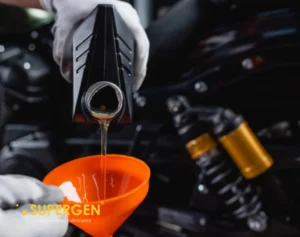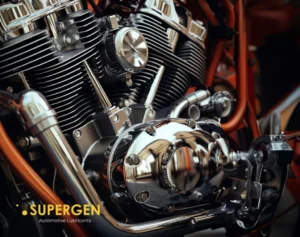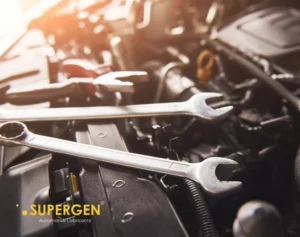Introduction
When it comes to discussing a car’s performance and power, the terms “horsepower” and “torque” are frequently mentioned. Both are crucial measurements that convey essential information about a vehicle’s capabilities. However, many people often confuse these terms or mistakenly assume they mean the same thing. In reality, horsepower and torque are distinct concepts, each playing a vital role in understanding a car’s overall performance. In this blog post, we will delve into the difference between horsepower and torque and shed light on their significance in the automotive world.
Defining Horsepower and Torque
Horsepower:
Horsepower is a unit of power used to quantify the rate at which work is done. In the context of cars, it measures how quickly an engine can perform work. The term “horsepower” originated during the early days of steam engines when inventor James Watt compared the output of his engines to the work performed by horses. One horsepower is equivalent to the power required to lift 550 pounds (250 kg) one foot (0.3 meters) in one second.
Torque:
Torque, on the other hand, refers to the rotational force generated by the engine. It represents the twisting force that the engine produces to rotate the crankshaft. Torque is typically measured in pound-feet (lb-ft) or Newton-meters (Nm) and is crucial in determining a vehicle’s ability to accelerate and tow heavy loads.
The Relationship Between Horsepower and Torque
To understand the relationship between horsepower and torque, it’s essential to recognize the mathematical equation that connects the two:
Horsepower = (Torque x RPM) / 5252
This equation demonstrates that horsepower is dependent on both torque and engine speed (RPM). It means that a higher torque output at a given RPM will result in increased horsepower. Similarly, if the torque remains the same but the RPM increases, the horsepower will also rise.
In essence, torque is the force responsible for a vehicle’s acceleration, while horsepower determines how quickly that acceleration can be maintained over a given speed range.
Practical Implications in Automotive Performance
Now, let’s explore the practical implications of horsepower and torque in automotive performance:
Torque’s Role: Torque is crucial for tasks that require power, such as towing or climbing steep inclines. Vehicles with higher torque figures can exert more force, making them better suited for heavy-duty applications like hauling or off-roading.
Horsepower’s Role: Horsepower comes into play when measuring a car’s top speed and ability to maintain higher speeds. It determines how quickly a vehicle can accelerate and how efficiently it can maintain speed on highways or racetracks.
Different Automotive Applications
The distinction between horsepower and torque becomes more apparent when examining different automotive applications:
Sports Cars: Sports cars prioritize high horsepower figures to deliver exhilarating acceleration and achieve higher top speeds. They often have engines tuned for higher RPMs, as horsepower is directly influenced by engine speed.
Trucks and SUVs: Trucks and SUVs emphasize high torque values, enabling them to tow heavy loads, traverse challenging terrains, and provide ample low-end power for tasks like towing or hauling.
Horsepower and Torque in different landscapes
Horsepower and torque play significant roles not only in the performance of vehicles but also in their ability to navigate various landscapes. Let’s explore how these measurements affect a car’s performance in different terrains.
On-Road Performance:
When it comes to driving on smooth, paved roads, horsepower tends to be more influential. Higher horsepower enables a vehicle to accelerate quickly, merge onto highways effortlessly, and maintain higher speeds. It’s particularly important for sports cars and performance-oriented vehicles designed for spirited driving.
However, torque is still relevant on the road, especially during passing maneuvers or when climbing hills. Adequate torque ensures that the vehicle has the necessary low-end power to accelerate quickly from lower speeds and overcome any uphill challenges. This is particularly significant for vehicles with larger engines, such as trucks and SUVs.
Off-Road Capability:
Off-road driving introduces a different set of challenges, such as uneven surfaces, steep inclines, and low-traction conditions. In these situations, torque becomes paramount. Vehicles with higher torque outputs excel in off-road environments as they provide the necessary force to conquer obstacles, crawl over rocks, and traverse challenging terrains.
Off-road vehicles, including SUVs, trucks, and specialized off-road vehicles like Jeeps, are often equipped with engines tuned for low-end torque. This allows them to handle off-road situations effectively, where maintaining momentum and torque delivery is essential.
Towing and Hauling:
When it comes to towing heavy loads or hauling cargo, torque is of utmost importance. The ability to generate high levels of torque at low engine speeds enables vehicles to tow trailers, boats, or carry heavy payloads with ease. Trucks and SUVs with robust torque figures are highly sought after for their towing capabilities.
Horsepower also plays a role in towing, particularly when it comes to maintaining speeds while hauling heavy loads. Higher horsepower ensures that the vehicle can sustain the necessary speed even when faced with inclines or adverse conditions. It provides the additional power required to overcome aerodynamic drag and other resistance factors.
High-Altitude Driving:
In high-altitude regions, where the air is less dense, engines tend to produce less power due to reduced oxygen levels. In such conditions, naturally aspirated engines may experience a significant loss of horsepower. Turbocharged or supercharged engines, however, can compensate for this by utilizing forced induction to maintain power output.
While horsepower may be affected by high altitude, torque remains relatively consistent. The twisting force provided by torque allows the vehicle to perform adequately, even in thinner air. Therefore, vehicles with good torque characteristics may prove advantageous in high-altitude driving scenarios.
Conclusion
While horsepower and torque are related, they represent different aspects of a car’s performance. Torque is the force that allows a vehicle to accelerate, tow heavy loads, and handle demanding tasks. Horsepower, on the other hand, determines a car’s top speed, acceleration capabilities, and sustained performance over a range of speeds.
Understanding the difference between horsepower and torque empowers car enthusiasts to make informed decisions based on their specific needs. Whether you seek the thrill of speed or require robust towing










